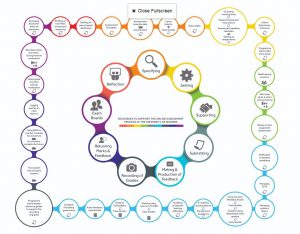Dr Stanimira Milcheva, Henley Business School
stani.milcheva@henley.reading.ac.uk
Year of activity: 2015/16
Overview
 We designed a simple game (called the REFinGame) which was aligned with the course material and launched it on Facebook. This approach, which could easily be applied to other discipline areas, was successfully used to enhance student learning and engagement with modules related to real estate finance.
We designed a simple game (called the REFinGame) which was aligned with the course material and launched it on Facebook. This approach, which could easily be applied to other discipline areas, was successfully used to enhance student learning and engagement with modules related to real estate finance.
Objectives
- Allow students to develop transferable skills.
- Allow students to apply course material in a real-world scenario.
- Provide immediate and personalised feedback.
- Improve interactions among students and between students and the lecturer.
- Help make the module more interactive and enjoyable for students.
Context
Real Estate Finance and Debt Markets (REMF41), is a master’s module within Henley Business School. During the module students gain an awareness of the financing process for real estate from both a borrower’s and a lender’s point of view. The game was designed so that students could apply course material and learn to assess the risks associated with financing decisions.
Implementation
First, together with Professor Charles Ward, the REFinGame was designed before the beginning of the module. The design had to take into account the course material and make simplifying assumptions so that the game could be modelled to best represent reality. The idea was that students would play the game over the course of the module outside the classroom. The game is about making financing decisions. Students are split into property developers (investors) and lenders (banks). The developers make decisions on how many properties to develop depending on how much money they have and how much finding they need from the bank. Moreover, they decide on the type of the properties, the location and other characteristics. The banks decide how much funding to provide to each developer. The game is played on Facebook on a weekly basis as information is introduced on the Facebook Wall each week. Students advertise properties on the Wall, and a decision is made by the game coordinator on the transaction price of the buildings, based on the total supply by developers and the macroeconomic situation in that period. The main idea is that students learn to assess the risks associated with financing decisions as they can lose the virtual money they have available by making the wrong decisions. The game is won by the student who accumulates the greatest amount of money.
A closed Facebook group was created for the module, a logo was created for the game, and students were briefed how to play the game. The developers and lenders had to negotiate loan conditions using Facebook messages. They then advertised the properties they developed by putting pictures and information on the Wall. The purchase prices are then communicated to the developers by private message. Information about the economy and the markets us distributed as a post on the Wall. Students have to fill in a spreadsheet each week and send this to the game instructor. The game instructor then provides feedback to each student. At the end of the game, students shared their experience of the game by giving a presentation in which they presented their strategy and performance throughout the game and compared it to their peers. These presentations are assessed.
Impact
A significant relationship was found between the students who performed well in the game and their overall module mark. Less tangible outcomes are that the game can help students develop skills such as problem solving, creativity, and strategic behaviour, and also increases the interaction among students and between the students and the lecturer. In particular we found that playing a game on Facebook helped to better integrate students who might be more reticent in class discussions. The lecturer can develop a better idea of each student’s performance leading to students receiving tailored and regular feedback and being able to improve throughout the game. This is one of the main advantages that students identified, along with the playfulness of the game, and the ease with which the game is played on Facebook. The major issues students faced were the perception that course material is not directly applied in the game. This demonstrates that it is important to manage student expectations as well as have a structured approach when it comes to game design. Ultimately, our goal is to create guidelines for using self-designed simple games incorporating Facebook, and improve student learning.
Reflection
The novelty of our approach is that we did not design a video game or a digital game using special software, but instead designed a simple game to be played online using Facebook as a platform. We wanted to show how with limited resources and time an instructor can construct a game and engage students with it, as Facebook is free and widely used by students. We have observed that the main challenge in the design of the game is to ensure that it aligns with the course material and to manage student expectations. For this purpose the instructor should very clearly explain how the game can benefit the students and how they will be assessed. Also, it is crucial to communicate how the course material can be used within the game to make decisions. For this purpose, the game designer needs to make sure that the students see the direct link between the course material and the learning outcomes of the game.






